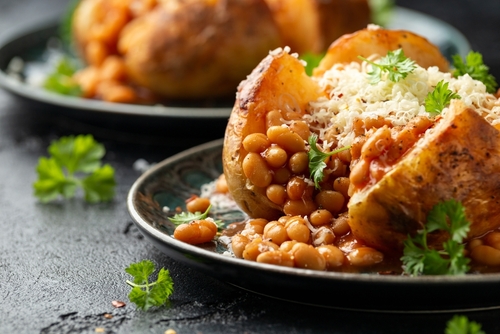Discovering the Jacket Potato
If you’ve recently moved to the UK or are just exploring British cuisine, you may be wondering: what exactly is a jacket potato? Also known elsewhere as a baked potato, this dish is a staple in homes, pubs, and school cafeterias across the country. What makes it special isn’t just the fluffy interior or the crispy skin. It’s the simplicity, versatility, and comfort it brings to the plate. In this guide, you’ll learn everything you need to know about making and enjoying a proper British jacket potato.
Choosing the Right Potato
Not all potatoes are created equal when it comes to jacket potatoes. For the perfect balance of fluffy insides and crispy skin, locals often turn to King Edward or Maris Piper varieties. These spuds bake beautifully and absorb flavours well.
If you’re only cooking for one or want a quicker bake, smaller potatoes work fine but may not offer the same texture. Russet potatoes, more common in the US, are also a decent substitute thanks to their starchy makeup and thick skins.
Prepping Your Potato Like a Pro
- Wash Thoroughly: Give your potatoes a good scrub under cold water. A soft brush helps remove dirt without damaging the skin.
- Dry Completely: Moisture is the enemy of crispy skin. Pat them dry with a towel before adding oil or seasonings.
- Poke Holes: Use a fork to prick a few holes in each potato. This lets steam escape during baking and prevents them from bursting.
- Oil and Season: Rub each potato with a bit of olive oil or melted butter. Sprinkle on kosher or sea salt for flavour and crunch.
Oven-Baking for the Classic Result
The traditional method for making jacket potatoes is baking them in the oven. Here’s how to do it:
- Temperature: Preheat your oven to 200°C (about 400°F).
- Bake Time: Place potatoes directly on the rack or on a tray. Bake for 45 minutes to 1 hour, turning halfway through. Larger potatoes may take a bit longer.
- Check Doneness: The skin should be crispy and a fork should slide in easily.
Alternative Cooking Methods
If you’re in a rush or want to experiment:
- Microwave: 8-10 minutes for soft insides, but no crispy skin.
- Air Fryer: 35-40 minutes for both speed and crispiness.
- Grill/BBQ: Wrap in foil and cook for about 45 minutes; adds a smoky flavour.
Toppings: Classic to Creative
The best part about jacket potatoes is how customizable they are. Here are some favourite British toppings:
Traditional
- Butter and grated cheddar cheese
- Baked beans and cheese
- Tuna mayo with sweetcorn
Adventurous
- Chili con carne with sour cream
- Coronation chicken (a curry-mayo mix)
- Vegan options like hummus and roasted veggies
Finish with a sprinkle of herbs or a twist of black pepper to elevate your meal.
Frequently Asked Questions
What makes a jacket potato different from a regular baked potato?
The term “jacket potato” is primarily British. It refers to a baked potato served with its crispy skin left on, often split open and filled with hearty toppings.
Can I make jacket potatoes ahead of time?
Yes! Bake them in advance, let them cool, and store in the fridge. Reheat in the oven at 180°C (356°F) for 15 minutes to restore crispiness.
Which potatoes are best for jacket potatoes?
King Edward and Maris Piper are top choices in the UK for their fluffy interiors and crisp skins.
Do I have to eat the skin?
No, but many enjoy it for the added texture and flavour. It’s also rich in nutrients.
